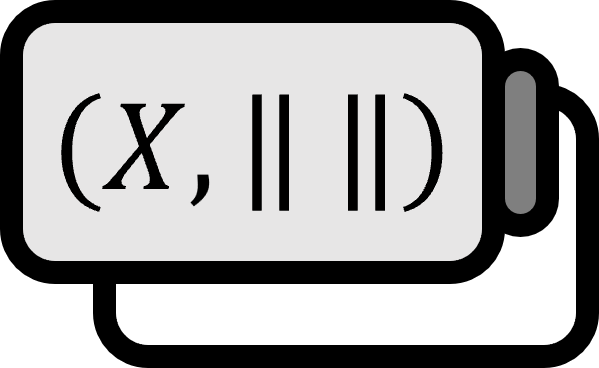Norm Space에서의 Infinite Series Span Total Sequence
Infinite Series1
Definition
Let $(X, \left\| \cdot \right\|)$ be a normed space. For a sequence $X$ of $\left\{ \mathbf{x}_{k}\right\}_{k\in \mathbb{N}}$, let’s define the partial sum as follows.
$$ \mathbf{S}_{N} := \sum \limits_{k=1}^{N}\mathbf{x}_{k} $$
If the limit of the partial sum $\mathbf{S}_{N}$ is $\mathbf{x} \in X$, i.e., if it satisfies the following equation
$$ \lim \limits_{N\to \infty}\left\| \mathbf{x}-\sum \limits_{k=1}^{N}\mathbf{x}_{k} \right\|=0 $$
then the infinite series $\sum_{k=1}^{\infty}\mathbf{x}_{k}$ is said to converge to $\mathbf{x}$, and it is denoted as follows.
$$ \mathbf{x}=\sum \limits_{k=1}^{\infty}\mathbf{x}_{k} $$
Description
It is a necessary process to talk about the basis of infinite-dimensional vector spaces over finite dimensions. To talk about convergence, $X$ needs to be a normed space. The generation of infinite-dimensional vector spaces is defined similarly to the generation in finite-dimensional vector spaces.
Generation
Definition
Given a sequence $\left\{ \mathbf{x}_{k} \right\}_{k \in \mathbb{N}}$ in the normed space $X$, the span of $\left\{ \mathbf{x}_{k} \right\}_{k\in \mathbb{N}}$ is defined as follows.
$$ \text{span}\left\{ \mathbf{x}_{k} \right\}_{k\in \mathbb{N}}:= \left\{ c_{1}\mathbf{x}_{1}+\cdots+c_{N}\mathbf{x}_{N} : N\in \mathbb{N},\ c_{1},\dots,c_{N}\in \mathbb{C} \right\} $$
Description
In other words, it is the set of all possible linear combinations of $N\in \mathbb{N}$.
The following property holds for the convergence of series and span.
Property
For each $\mathbf{x} \in X$,
$$ \begin{equation} \mathbf{x}= \sum \limits_{k=1}^{\infty} c_{k} \mathbf{x}_{k}\end{equation} $$
can be represented, then the following equation holds.
$$ \begin{equation} \overline{\text{span}} \left\{ \mathbf{x}_{k} \right\}_{k\in \mathbb{N}} =X \end{equation} $$
Description
If $(2)$ holds, then $\left\{ \mathbf{x}_{k} \right\}_{k\in \mathbb{N}}$ is called a complete sequence or total sequence of $X$. Moreover, a normed space $X$ that has a total sequence is said to be separable.
Meanwhile, although $(1) \implies (2)$ holds, the converse does not. That is, $(1)\quad \!\! \not \!\!\!\! \impliedby (2)$.
Ole Christensen, Functions, Spaces, and Expansions: Mathematical Tools in Physics and Engineering (2010), p40-41 ↩︎
